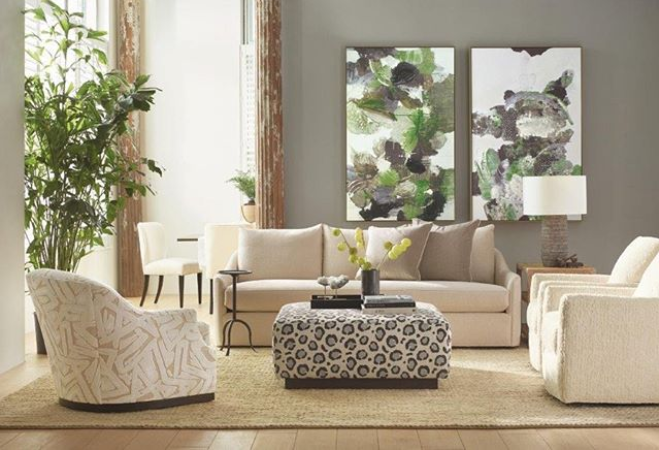How to Pick the Right Colour Scheme for Your Home
Picking a colour scheme that works with your interior design may sound easy in theory: pick your favourite colours. Unfortunately, our favourite colours may not be very versatile or complementary when it comes to your home decor.
When you’re looking at choosing a colour scheme, you must consider a few things:
the furniture in the space,
the purpose of the space, and
the relation to the other rooms in the home.
Here are eight tried-and-true methods for picking a colour scheme that works.
Look for the Largest Pattern First
If you already own your furniture and have to design around it, look for the largest pattern. That could be a sofa or a piece of art. Use the colours in the pattern to influence the colour scheme of the rest of the space for a planned and cohesive look.
Start with the Main Living Spaces
For a smooth cohesion that fits the whole house, start with the living room, dining area, and entranceway of your home. These are the main living spaces that you see before you ever get to a bedroom, den, or bathroom.
If you choose a deep forest green in the living room, consider incorporating a lighter green in the laundry room to pull the entire home together with an overall colour pallet.
Ombré Isn’t Just for Your Hair
A reliable method of planning out a colour scheme in a room is to start with darker colours close to the floor and moving to lighter colours as you get close to the ceiling.
Pick Colours That Suit Your Style
Source: Precedent Furniture Instagram
Ultimately, you need to feel comfortable and represented with the space. Choose colours that make you happy and complement your style. If you’re unsure what your interior design style is, look at your personal fashion to get an indication.
Use the Colour Wheel
Using bold colours can seem like it goes against a holistic colour scheme approach, but there’s a way to use bright colours without ignoring the rest of the space or home. Refer to the colour wheel to find complementary colours across the wheel or shades within the same sections of the wheel for a cohesive design.
Remember the 60-30-10 Rule & the Rule of Three
Interior design has many rules that we like to think of more as standard practice guides. Two of these that can help with picking a colour scheme are the 60-30-10 rule and the rule of three.
The 60-30-10 rule suggests dividing your space into 60% dominant, 30% secondary, and 10% accent colours. Imagine a space with 60% grey, 30% soft tangerine, and 10% dark navy.
The rule of three is about limiting your colour palette to three colours to avoid getting overwhelmed or losing cohesion and direction.
Notice the Effects of Lighting
Lighting plays a significant role in how colours look. Using dark colours in a dark space can make it feel small and depressing. Using bright colours with cool undertones in a bright room can end up a little overwhelming and sometimes take on a neon aesthetic. Make sure the colours you choose work with the lighting in the space, or you could end up with a completely different colour depending on the light.
Use Shades to Pull Things Together
Neutral tones and shades are fantastic ways to pull more colours together. If you want to accomplish a vibrant green monochromatic look, mixing in a soothing grey could give you the structure to add in another colour.
Seek Out Advice
If you’re struggling to find a colour scheme you love, that works with any furniture or colours you’ve already chosen, ask for help. A design expert will have experience seeing first-hand how colours work together in a variety of spaces.
Our team at LUXE helps people create their dream homes every day. We see how colours work in spaces of every size and with numerous varieties of furniture and lighting. We can help you find the perfect colour palette for your home decor. Get in touch today.

